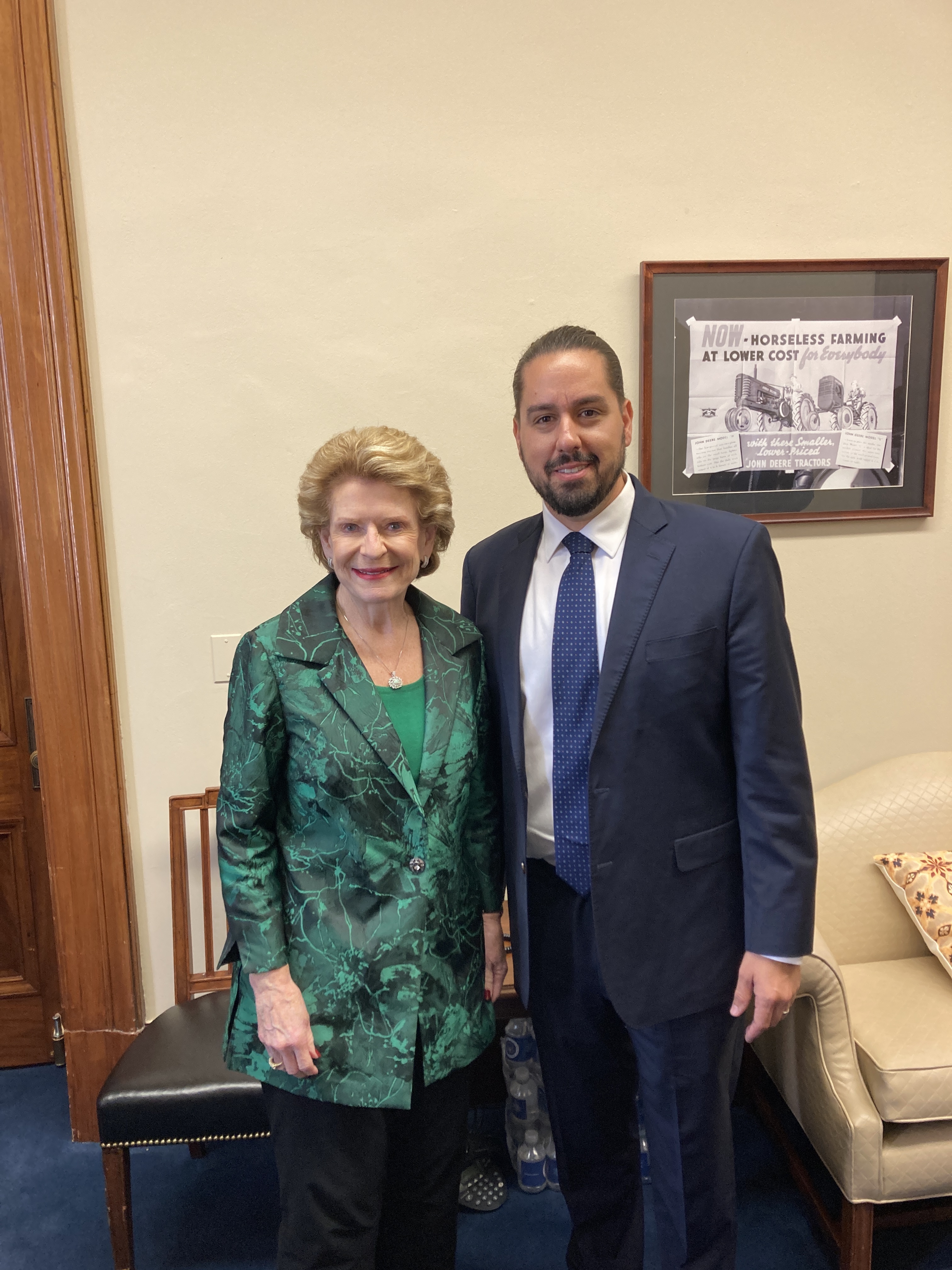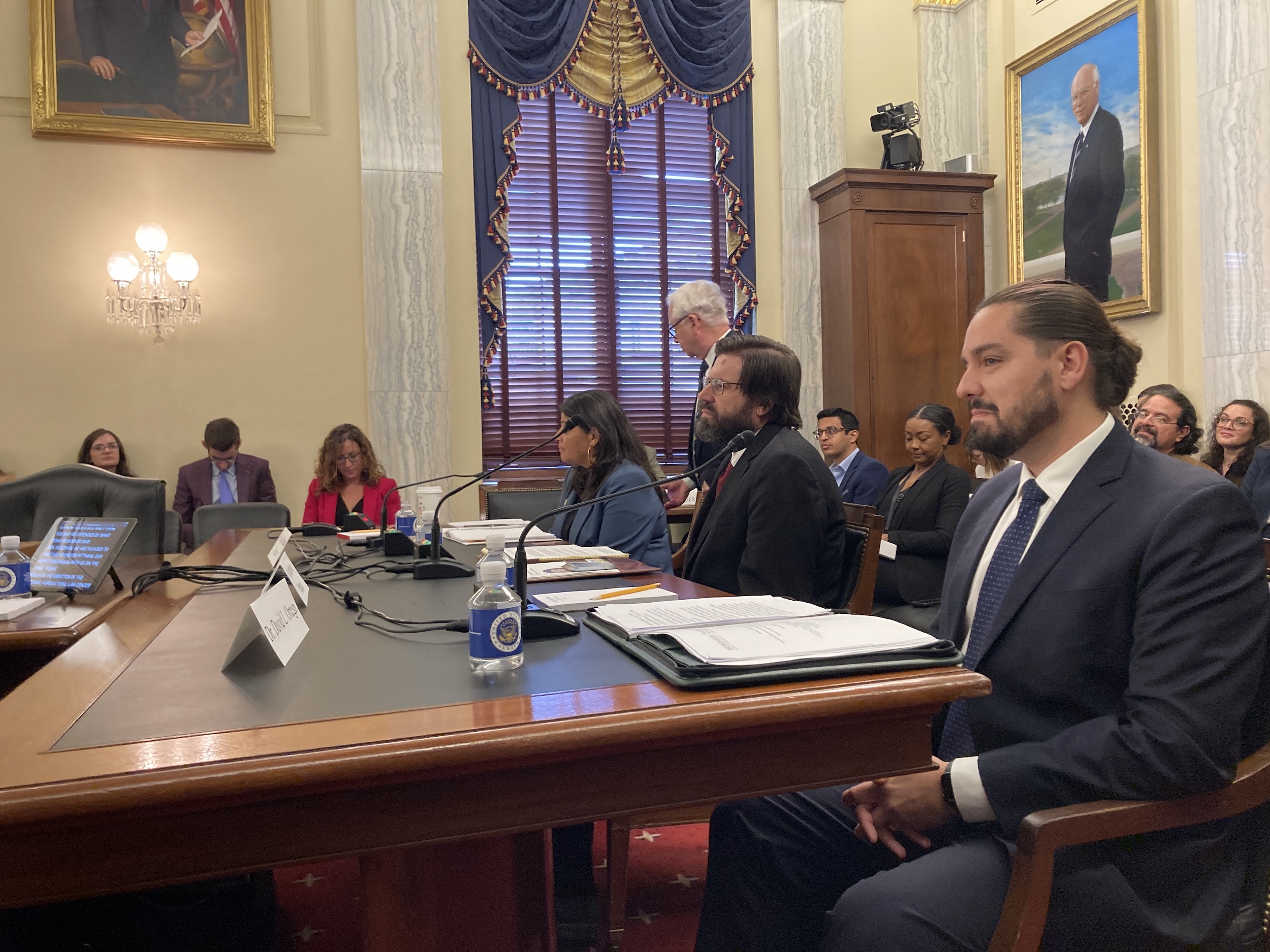
David Ortega, faculty laureate and associate professor in the College of Agriculture and Natural Resources, provided expert testimony to the United States Senate Committee on Agriculture, Nutrition and Forestry’s hearing on foreign investment in U.S. agriculture on Wednesday, Sept. 27. The committee is chaired by U.S. Senator Debbie Stabenow of Michigan. Ortega answers questions about his testimony.
How much agricultural land is in the U.S. and what percentage of that is owned by foreign entities?
The United States has approximately 1.3 billion acres of privately held agricultural land, including forestland. Out of these 1.3 billion acres, around 40 million acres were under full or partial foreign ownership as of 2021. Current foreign agricultural holdings represent 3.1% of the country’s privately owned agricultural land. Nearly half, or 47%, of foreign-owned land is forestland (timber or forest), 29% is dedicated to crops and 22% to pasture and other agricultural land.
What country owns the most agricultural land in the U.S.?
Contrary to popular belief, foreign governments themselves don’t typically own U.S. agricultural land. Most of the foreign-owned agricultural land in the U.S. is owned by Canadian interests (31% or 12.8 million acres). Other major stakeholders originate from the Netherlands, Italy, the United Kingdom and Germany — together accounting for 31% of foreign-owned land in the U.S. Entities from China own a smaller portion, slightly under 1% of all foreign-owned agricultural land.
Why do foreign entities buy American farmland?
Agricultural land can be a great investment. Foreign entities have bought this land for food production, energy projects such as wind or solar farms, or as an investment due to its stable growth and returns. For example, in 2023, the average U.S. total agricultural land value hit a record $4,080 per acre, representing a 7.4% increase from the previous year and double the value from 2007.
Does the U.S. government regulate foreign ownership of farmland?
At the federal level, there are no laws restricting the amount of agricultural land that foreign entities can acquire. However, some states have significant restrictions or even bans on certain types of foreign ownership of agricultural land. Around two dozen states have enacted laws limiting or prohibiting agricultural land ownership by nonresident foreigners, foreign corporations and foreign governments.

Should we be concerned about China owning U.S. farmland?
Chinese ownership of U.S. agricultural land has garnered attention due to high-profile acquisitions and rising tension between China and the United States. The government of the People’s Republic of China, like most other governments, does not directly own any agricultural land in the United States. Chinese-owned U.S. farmland is a very small fraction of all foreign-owned land in the U.S. — approximately 383,934 acres or less than 1% of all foreign-owned agricultural land. This implies that Chinese entities have a stake in just 0.03% of all privately held U.S. agricultural land, significantly less than investors from the Netherlands (4.9 million acres), Portugal (1.5 million acres) and Luxembourg (802,249 acres).
Entities from 17 countries have bigger stakes in American agricultural lands ahead of China. While Chinese ownership of agricultural land does not threaten our ability to produce, it is important to note that their foreign investment strategy has shifted from the early 2000s to now include the acquisition of large agribusinesses. As such, issues over consolidation, further business acquisitions and concerns surrounding intellectual property in the agri-food sector need to be monitored and evaluated.
Another area of concern is China’s escalating investment in public agricultural research and development. Compared to the U.S., China is now the largest global funder of agricultural research, having surpassed the European Union in 2011. Currently, China commits over $10 billion to agricultural research and development — twice the amount the U.S. spends and five times the amount China was spending two decades ago. In contrast, the level of spending in the U.S. has fallen by about a third over the past two decades.
China’s increasing investment in agricultural research and development, coupled with a decline in the U.S., raises concerns about potential shifts in global agricultural competitiveness as well as the geopolitical influence of these agricultural innovations.
Does foreign land ownership threaten our food security in the U.S.?
Foreign ownership of U.S. farmland does not threaten our ability to produce food. The U.S. is not only self-sufficient in basic food production, but we also provide food for many across the world. Food insecurity arises in the U.S. not because of production deficits but because of issues of affordability and access.